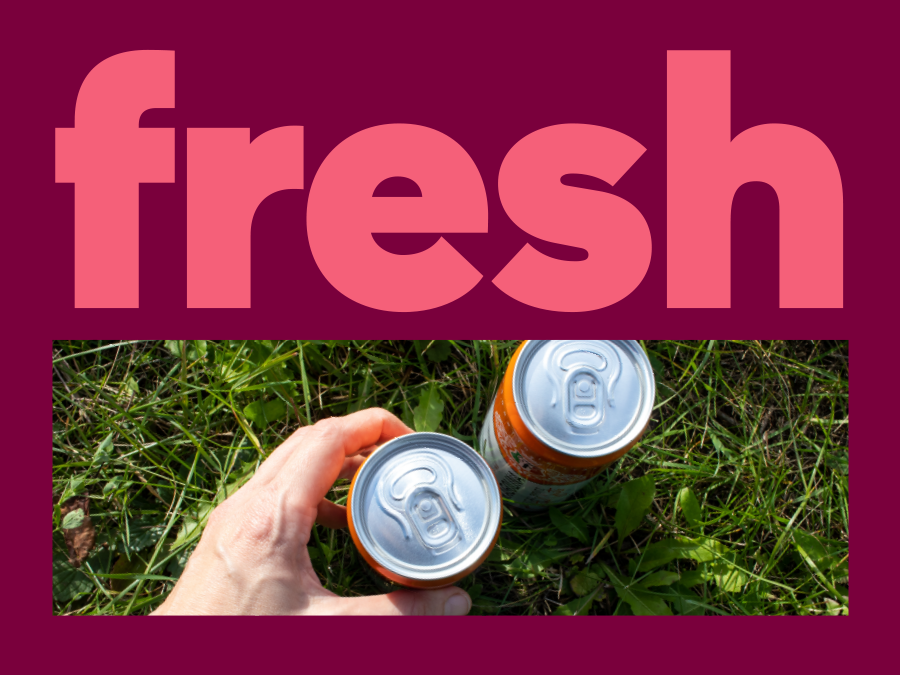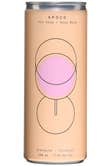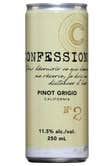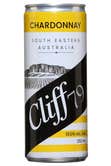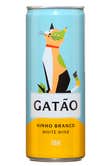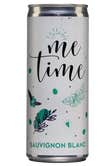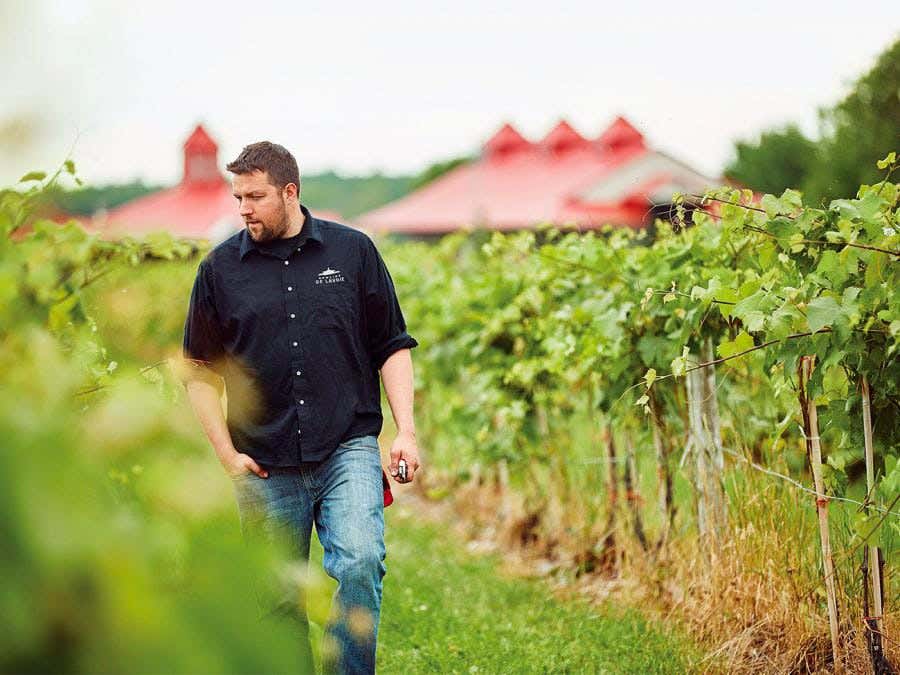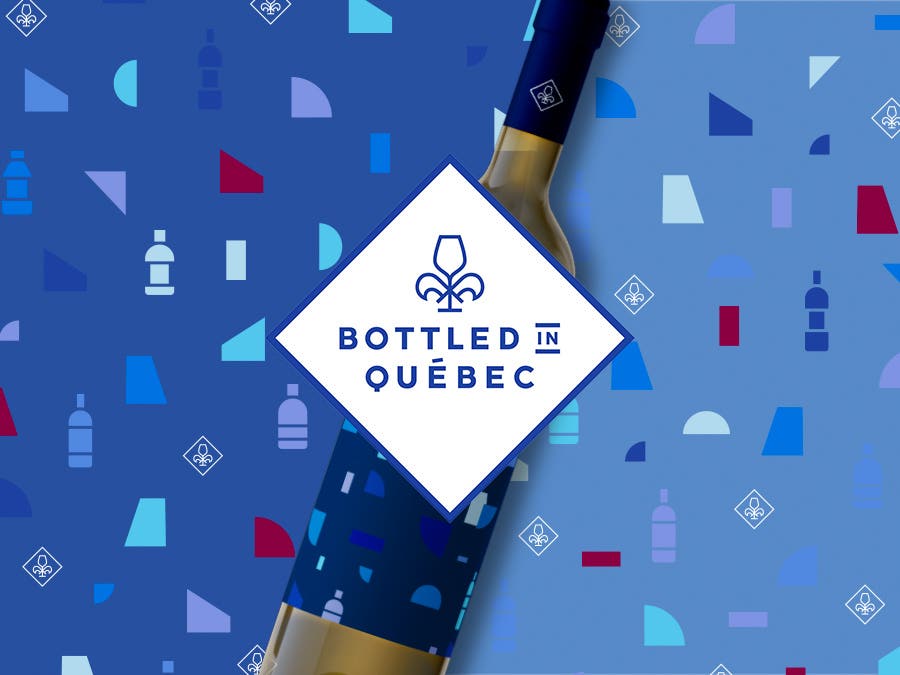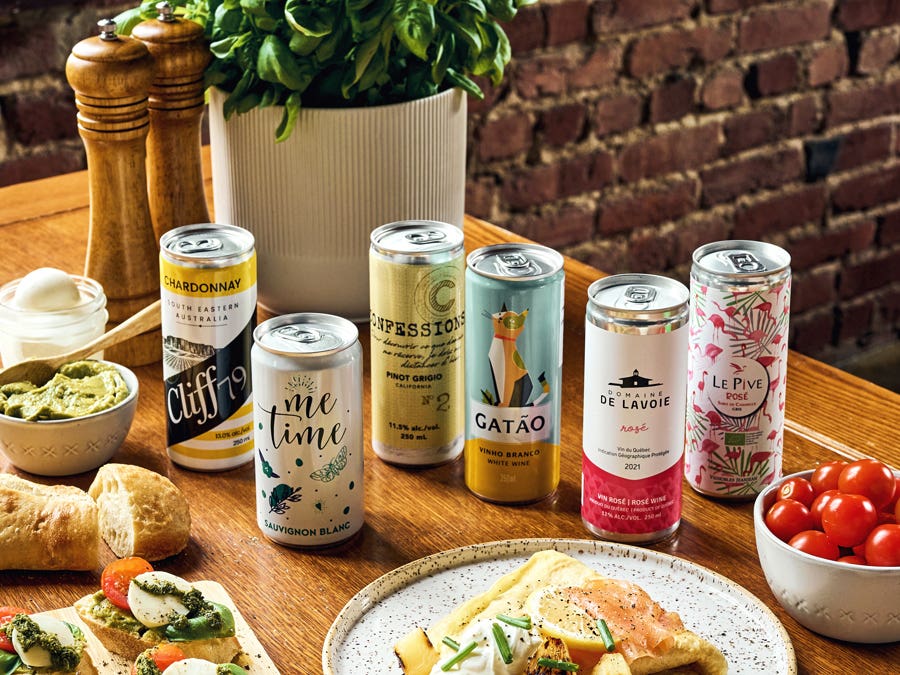Local pionneer
In 2015, Domaine de Lavoie in Rougemont was one of the first businesses in Quebec to produce canned cider. “The idea was to stand out by offering canned beverages, which was a popular new trend in the microbrewery industry,” said Francis-Hugues Lavoie, co-owner of the estate. It’s no surprise then that it was also the first to have an Origine Québec canned wine on the shelves at the SAQ. After noticing that canned wine was becoming all the rage in the US and around the world, the entrepreneur decided to jump on the bandwagon.
“We saw that people were embracing canned drinks. They’re handy and easier to carry when you go hiking—plus, there are fewer regulations for cans versus bottles when you bring them to the park. They’re also more eco-friendly. We reached out to the SAQ to see if they were interested in selling canned wine and received a positive response.”
— Francis-Hugues Lavoie
The little can that could
According to a 2021 study¹, worldwide sales of canned wine made over US$235 million. That number is expected to double—maybe even triple—by 2028. While Quebecers are a bit slower to adopt the trend, the category still experienced a 43% hike in sales at the SAQ in 2022, stated Marc-Olivier Rail, Account Director for Alternative Containers at the SAQ.
“Your average consumer may not be an early adopter,” he said. “But younger customers are more used to canned beverages—they’ll be interested. They’re the ones who’ll drive the movement.”
Right now, there are only about 30 kinds of canned wine available on rotation at the SAQ, but customers can look forward to a wider selection in the coming years, especially when it comes to sparkling wine. “Canned sparkling wine is becoming a big thing in the US, but that hasn’t carried over to Quebec yet,” said Marc-Olivier.
Handy, eco-friendly and responsable
With responsible consumption becoming a hot topic, individual 250 ml cans are a great alternative to 750 ml bottles. “They’re perfect when you just want a drink or two,” said Marc-Olivier. “And if your group can’t agree on a wine for your get-together, everyone can choose what they prefer and nothing goes to waste,” Francis-Hugues added.
Cans also offer certain advantages over traditional packaging. Aluminum cans are considerably lighter than glass, which means they produce slightly less GHG emissions throughout their lifecycle, from beginning to end. This makes cans a great alternative from an environmental perspective, especially if they're properly recovered and recycled.
Aluminum also opens you up to entire markets that aren’t accessible to glass, like festivals, sporting or cultural events, and even golf courses, to the delight of avid golfers like Marc-Olivier. “You could be at a festival or a show and enjoy some wine without having to worry.”
With summer coming up, it’s also ideal for an outdoor picnic or cocktail party! Plus, cans chill faster than bottles. “Even if you grab one off the shelves, you’ll still be able to enjoy it in no time,” added Marc-Olivier. Just pop it in the fridge or the cooler for a bit, and it’ll be ready to drink before you know it.
A question of taste
None of that matters if the flavour isn’t there. Does it taste different than bottled wine?
“We’ve conducted comparative tests with cans and bottles, and they’re both very, very similar.”
— Marc-Olivier Rail
Francis-Hugues believes that the main difference lies in the experience. “When you drink from a glass, the wine has room to breathe, but when you drink straight from a can, it’s all about taste—you don’t get much of the aroma,” he explained.
That’s why he prefers light wines that are easy to drink, like whites, rosés and delicate reds. “A particularly full-bodied red may be more difficult to appreciate,” he said.
That being said, nothing’s stopping you from pouring your can into a wine glass if you’re at home or on a patio!
This is only the beginning
Domaine de Lavoie currently produces about 50,000 cans of wine per year. In addition to the rosés that are already on the market, you’ll soon find canned whites and maybe even canned sparkling wine in stores. And they’re only getting started! “Natural products could be the next step. Maybe a canned natural white wine? We’ve noticed that people are interested in that right now—it’s very in,” said Francis-Hugues.
As for Marc-Olivier, he promised that exciting new products will be hitting the shelves in the coming months.
All to say that cans are the future!
Discover a selection of canned wine
We recommend
-
Read more
Cider is back in fashion. In addition to making wine, Domaine de Lavoie, in Rougemont, follows this growing trend.
-
Read more
"The world and the times are changing" sang Richard Séguin, and it’s usually for the best! In the behaviour changes we must adopt for the health of the planet, the way beverages and other foods are packaged is part of the solution.
-
Read more
In the wake of its overwhelming success with craft beers and pre-mixed cocktails, cans are entering the world of wine and, to our sheer delight, this handy format is increasingly present on store shelves. Discover six canned wines and recipes as light as a summer breeze.
 Access to SAQ Inspire personalized services and store inventories are unavailable at the moment.
Access to SAQ Inspire personalized services and store inventories are unavailable at the moment. Free in-store delivery with purchases of $75+ in an estimated 3 to 5 business days.
Free in-store delivery with purchases of $75+ in an estimated 3 to 5 business days. 
